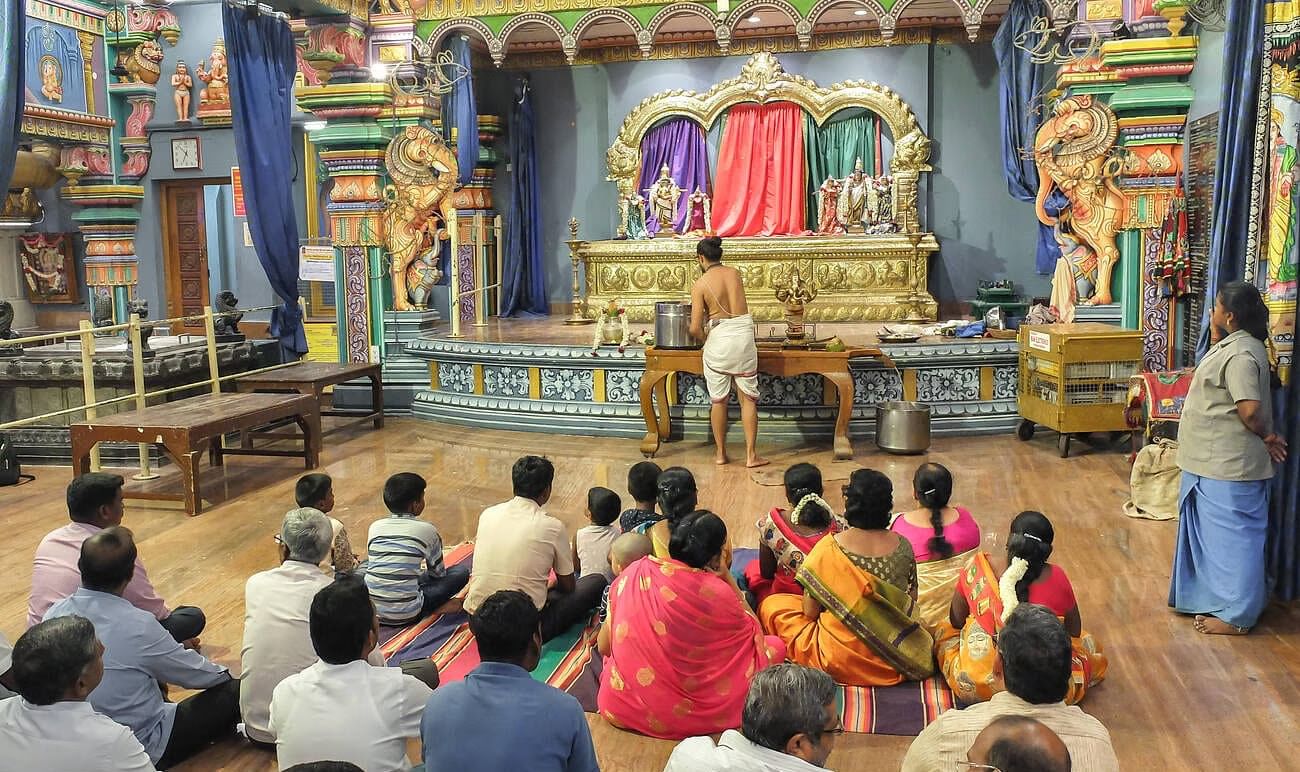India, also known as the Deva Bhumi (Land of Gods), is home to countless temples that showcase its deep spirituality and rich heritage. Among the many temples in Pondicherry, the Arulmigu Manakula Vinayagar Temple is the most sacred and vibrant shrine and amongst the best places to visit in Pondicherry .
This famous temple in Pondicherry attracts not only devotees but also tourists who often choose to explore its divine aura, stunning Dravidian architecture, and fascinating history. For those planning a spiritual getaway, booking customized India trip packages is a great way to include the Arulmigu Manakula Vinayagar Temple along with Pondicherry’s beaches, French colonial streets, and cultural attractions.
Here’s a detailed guide covering the history of Arulmigu Manakula Vinayagar Temple, its architecture, timings, and the best ways to reach this divine abode.
Manakula Vinayagar Temple Timings
The Manakula Vinayagar Temple timings are:
- Morning: 5:30 AM – 11:00 AM
- Evening: 4:30 PM – 9:00 PM
How to Reach Arulmigu Manakula Vinayagar Temple?
Location: WRPM+8F7, R. Manakkula Vinayagar St, White Town, Puducherry, 605001
Wondering how to reach Arulmigu Manakula Vinayagar Templr Located centrally in Pondicherry, the temple is easily accessible by various modes of transport, the detailed information of which is provided here.
By Air
- The nearest airport is Chennai International (135 km). Taxis and buses connect Chennai to Pondicherry.
By Train
- Villupuram Railway Station (35 km) is the closest hub with trains from Chennai, Madurai, and Trichy.
By Road
- Well-connected by buses and private taxis from Chennai, Bengaluru, and Madurai.
If you’re booking India holiday packages, most spiritual tours covering South India include Arulmigu Manakula Vinayagar Devasthanam.
Best Time to Visit Arulmigu Manakula Vinayagar Temple
Wondering the best time to visit Arulmigu Manakula Vinayagar Temple. Here are the complete details:
- October to March: Pleasant weather, ideal for temple visits and sightseeing
- Festive Season: Ganesh Chaturthi is celebrated with grandeur, making it the best time to visit
Things To Do at Arulmigu Manakula Vinayagar Temple
When visiting the Ganesha Temple Pondicherry, here’s what you should not miss. These are also amongst the unique things to do in Pondicherry.
- Attend Daily Rituals: Witness morning and evening aartis for an authentic spiritual experience.
- Seek Blessings from Lakshmi the Elephant: A highlight for children and families.
- Admire Temple Art: Explore the mandapam and prahara decorated with colorful carvings.
- Explore Nearby Temples in Pondicherry: Combine your visit with Sri Varadaraja Perumal Temple and Sri Gokilambal Thirukameswar Temple.
History of Arulmigu Manakula Vinayagar Temple
The history of Arulmigu Manakula Vinayagar Temple dates back more than 500 years, much before French colonial rule in Pondicherry. The word Manakula derives from Tamil, where “Manal” means sand and “Kulam” means pond, describing the sandy pond that once surrounded the temple.
During French rule in 1688, attempts were made to remove the idol of Lord Ganesha by immersing it in the sea. Miraculously, the idol reappeared every time, leading even the colonizers to respect and worship Lord Ganesha. Today, the Arulmigu Manakula Vinayagar Devasthanam is revered as a spiritual powerhouse.
Architectural Grandeur of Arulmigu Manakula Vinayagar Temple
The Arulmigu Manakula Vinayagar Temple is an outstanding example of Dravidian architecture:
- Majestic Gopurams with detailed carvings narrating mythological stories.
- A gold-laminated kodi kambam (flag post) rising 18 feet tall.
- A golden teakwood chariot weighing 7.5 kg of gold worth nearly 75 lakhs, donated by devotees.
- Vibrant sculptures of deities like Lord Krishna, Murugan, Shiva, and Parvati, alongside the central Vinayagar idol.
No wonder this shrine is celebrated as the most famous temple in Pondicherry.
Spiritual Significance of Arulmigu Manakula Vinayagar Temple
Visiting the Vinayagar Temple Pondicherry is considered highly auspicious, especially for:
- Blessings for Newborns: The temple has been a sacred place for baby blessings for centuries.
- Remover of Obstacles: Devotees believe Lord Ganesha here removes life’s challenges and brings prosperity.
- Unique Rituals: Daily pujas, chariot processions, and blessings from Lakshmi, the temple’s elephant, enhance the experience.
For more information visit manakulavinayagartemple.com
Conclusion: A Timeless Spiritual Experience
The Arulmigu Manakula Vijaynagar Temple is more than a place of worship, it is a cultural landmark that weaves together history, spirituality, and Dravidian artistry. From the miraculous legends during French rule to its intricate gopurams and golden chariot, the temple reflects centuries of resilience and devotion.
So whether you’re a devotee seeking blessings, a history lover exploring the famous temples in Pondicherry, or a traveler on a cultural tour, this sacred site promises an experience that stays with you long after your visit.
For those planning to explore Pondicherry with ease, WanderOn offers guided temple tours, curated itineraries, and immersive cultural journeys that bring the spirit of South India to life.


















